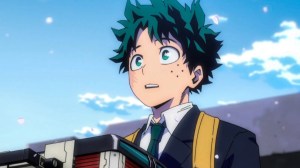In the realm of comics, the idea of reinvention isn’t an uncommon thing. Over the years, creators have taken beloved characters, concepts, and stories and given them new takes including everything from small shifts in details to full-on changes to origins that lead to larger, more fundamental alterations to everything fans know about the iconic characters and stories that they love. With DC’s new All In publishing initiative, DC is taking on reinvention again with the Absolute Universe — including a new, reinvented version of Batman. Written by Scott Snyder with art by Nick Dragotta, Absolute Batman #1 introduces a very different version of Batman and Bruce Wayne as well as the Gotham he lives in than we’ve ever really seen before, making big shifts away from the familiar story of the playboy billionaire who is secretly Gotham’s Dark Knight towards something more grounded and more human but no less driven. And while, as a lifelong Batman fan, the idea a reinvented Batman admittedly had me skeptical going in, Absolute Batman #1 not only delivers on the promise of being something fresh and original but also creates what might be one of the most authentic Batman takes we’ve seen in a long time, bringing the character into the 21st century in a way that is exciting and thrilling and gives readers — new and seasoned — a new Batman to get behind.
Videos by ComicBook.com
In Absolute Batman #1, a mysterious group known as the Party Animals have been terrorizing Gotham City as they carry out disturbing and gruesome acts of violence with seemingly no rhyme or reason. Anyone who crosses their path is in danger. The horrifying situation has caught outside attention, prompting the dispatch of MI6 agent Alfred Pennyworth. However, it soon becomes clear that while Alfred has been dispatched to deal with things in Gotham, he’s not the only person trying to handle the situation. There’s another on the scene also attempting to deal with the Party Animals: Batman. Structurally, setting the story up from Alfred’s perspective is solid choice as it works on two levels. First, this Alfred has much of the dark, brooding personality many readers will more readily attribute to mainstream Bruce/Batman so, tonally, it feels familiar and is a good way to what is already expected and more easily brings people into the story. But with the revelation this is Alfred and not Batman, we also are given a better overview of what the situation in Gotham actually is and, in turn, are introduced to Batman much the same way as Alfred is as a character. This approach allows for the story to unfold naturally, providing a lot of information without being overwhelming or too bulky.
This approach also makes the revelation this Batman’s origin story feel that much more interesting. The Batman of Absolute Batman #1 does not have wealth and privilege, but he does share something with his mainstream universe counterpart in that his vigilante path is rooted in trauma — what would Batman be without his trauma, after all. That said, what Snyder does here feels more nuanced and more realistic in a sense. The reader is not only walked through the loss that changed Bruce Wayne’s life, but we’re also shown how it impacted him. It is perhaps some of the finest writing in this issue, dealing with the real traumatic impact of Bruce’s childhood trauma and how he internalizes it, the struggles he experiences growing up, and ultimately how he turns it into something else — and how even though he has become Batman. It’s not something that is portrayed as necessarily heroic or healthy. Instead, Bruce’s response to his childhood trauma is much more in line with what one might expect to see in the real world, even as it gets dialed up to the next level where he takes on this darker vigilante mission. And things do get darker. This Batman pushes things even further to the limit and is, in some respect, darker and more violent and it is much more fitting to what one might expect from his experience and a more “modern” Batman, but it works well and never deviates from the core of the character.
Artistically, Snyder’s writing is very well supported by Dragotta’s art. Dragotta’s distinctive stye both gives Absolute Batman a familiar look and feel while also reinventing the characters visually so that they feel new. Alfred in particular is very distinctively not like any previous version of Alfred Pennyworth we’ve seen before, but he also still has much of the physical carriage and grace one would expect from the man previously known as Batman’s butler. There’s also something to be said about the design of this universe’s Batman. While the character is massive — almost comically so — juxtaposed against the scope of the city and the threat and especially when you get to know more details about this version of Batman and Bruce Wayne, the heft and bulk of the character simply makes sense. Remember, this is a Batman without his money which makes everything much more physical and it is well-reflected in the art. Everything here feels fresh and bold while never straying too far from the familiar (and, notably, at the end of the issue there is one particular image of an unexpected character that is an exceptional example of this.) It is all just the right balance.
As I said before, reinvention isn’t an unfamiliar concept for comics, but it’s not one that always works. However, with Absolute Batman #1 Snyder and Dragotta have not only successfully reinvented and reimagined one of the most iconic and beloved characters in popular culture but have kicked off am expertly considered story as well, giving readers something that stands on it own and has real meaning. With a strong balance of familiar elements and a new approach that is both more contemporary and more grounded, Absolute Batman #1 has given new readers a compelling jumping on point while offering longtime comics fans plenty to be interested in as well. It’s a well-crafted issue that works on all levels and will be fascinating to see where it goes from here.
Published by DC
On October 9, 2024
Written by Scott Snyder
Art by Nick Dragotta
Colors by Frank Martin
Letters by Clayton Cowles
Cover by Dragotta and Martin








